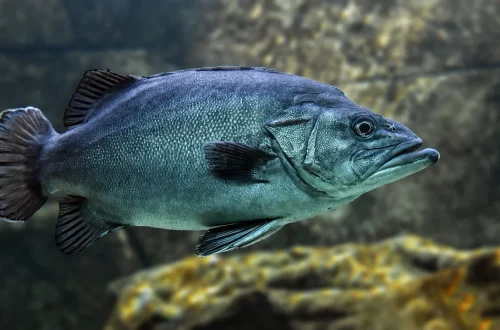
Can You Spay a Dog That Is in Heat Safely and Effectively?
As a dog owner, you may find yourself facing numerous questions about the health and well-being of your furry friend. One common concern arises when considering spaying, particularly if your dog is currently in heat. Understanding the intricacies of this situation is essential for any responsible pet owner. While spaying is a routine procedure that offers numerous benefits, including the prevention of unwanted litters and health risks related to reproductive issues, the timing of the surgery can raise concerns.
When a female dog is in heat, her body undergoes significant hormonal changes, making the decision to spay more complex. The heat cycle, also known as estrus, is a period when a female dog becomes receptive to mating, and this phase can last several weeks. During this time, the dog’s body is preparing for potential pregnancy, which can complicate a spay procedure.
Pet owners often wonder if it’s safe to proceed with spaying during this phase or if it’s better to wait until the heat cycle is over. The answer is not straightforward and involves various medical considerations. Ultimately, the health and well-being of your pet should be the top priority when making this decision.
Understanding the Heat Cycle in Dogs
The heat cycle in dogs typically consists of four stages: proestrus, estrus, diestrus, and anestrus. Each stage plays a crucial role in the reproductive process, and understanding these phases can help owners make informed decisions regarding spaying.
Proestrus is the stage where the female dog’s body prepares for mating. This phase can last anywhere from 7 to 10 days and is characterized by swelling of the vulva and the presence of a bloody discharge. During this time, male dogs may be attracted to the female, although she will not be receptive to mating just yet.
The next phase, estrus, is when the female becomes fertile and is receptive to male dogs. This stage lasts about 5 to 14 days. During estrus, the discharge may change from bloody to a lighter color, and the vulva remains swollen. This is the period when most breeders would consider mating.
Following estrus is diestrus, which lasts approximately 60 days. In this phase, if the dog has not mated, her body will start to return to its normal state. If she has mated and become pregnant, this phase will lead to gestation. Finally, the anestrus phase is a resting period that can last several months, during which the dog will not exhibit any signs of heat.
Understanding these stages is crucial for dog owners. If you are considering spaying your dog while she is in heat, it’s essential to recognize that her body is significantly altered during this time, which can affect the surgical procedure and recovery process.
The Risks of Spaying a Dog in Heat
While spaying a dog in heat can be performed, it is not without its risks. The primary concern is the increased blood flow to the reproductive organs during this time, which may lead to complications during surgery. The surgery itself involves removing the ovaries and uterus, and when a dog is in heat, these organs are engorged with blood, making the procedure more challenging.
Veterinarians often express concern about excessive bleeding during the surgery. The risk of hemorrhage can increase because of the heightened vascularization of the reproductive system when a dog is in heat. Additionally, the increased size of the ovaries and uterus can complicate the surgical procedure, potentially leading to longer operation times and extended anesthesia, which can pose risks to the dog’s health.
Post-operative recovery may also be more complicated for a dog that has been spayed during her heat cycle. The hormonal changes can affect the healing process, leading to a longer recovery time and a higher chance of complications like infections or inflammation.
Due to these risks, many veterinarians recommend waiting until the heat cycle is over before proceeding with the spay surgery. However, the choice will ultimately depend on the individual dog’s health, age, and the veterinarian’s recommendations.
Consulting Your Veterinarian
If you are considering spaying your dog while she is in heat, consulting with your veterinarian is essential. Your vet can provide personalized advice based on your dog’s specific health needs, age, and breed. They can evaluate whether it’s safe to proceed with the surgery or if it would be better to wait.
During your consultation, be prepared to discuss any concerns you might have, including your dog’s health history, temperament, and any previous medical issues. This information can help your veterinarian assess the risks involved in spaying during heat.
In some cases, your veterinarian may recommend a blood test or other diagnostic procedures to ensure that your dog is healthy enough for surgery. This precaution can help identify any underlying health issues that may complicate the procedure.
Moreover, if your dog is already in heat, your veterinarian can discuss alternative options, such as delaying the surgery until after the heat cycle or considering other forms of birth control if immediate spaying is not feasible.
Ultimately, the goal is to ensure the best possible outcome for your pet. Your veterinarian’s expertise is invaluable in making this critical decision, so don’t hesitate to ask questions and seek clarification on any points that you find confusing.
The Benefits of Spaying
Regardless of whether you choose to spay your dog during heat or after her cycle, the benefits of spaying are substantial. One of the primary advantages is the prevention of unwanted litters. Overpopulation is a significant issue in many areas, and spaying helps to mitigate this problem by ensuring that female dogs do not contribute to the number of homeless pets.
Spaying also provides health benefits, as it eliminates the risk of certain reproductive health issues, such as pyometra and ovarian cancer. Spaying can also reduce the risk of mammary tumors, especially if performed before the first heat cycle.
Additionally, spaying can help to curb undesirable behaviors associated with the heat cycle, such as excessive barking, restlessness, and roaming. These behaviors can be stressful for both the dog and the owner, and spaying can lead to a more balanced and calm pet.
Moreover, spayed dogs often have a lower risk of certain diseases and may enjoy a longer lifespan compared to their unspayed counterparts. From a behavioral perspective, spayed dogs tend to be less aggressive and more focused on their owners, which can contribute to a stronger bond between pet and owner.
In conclusion, while spaying a dog in heat is possible, it comes with certain risks that should be carefully weighed. The decision should always involve consulting with a qualified veterinarian who can guide you through the process based on your dog’s individual health needs.
**Disclaimer: This article is for informational purposes only and should not be considered medical advice. Always consult with a veterinarian for health-related concerns regarding your pet.**




